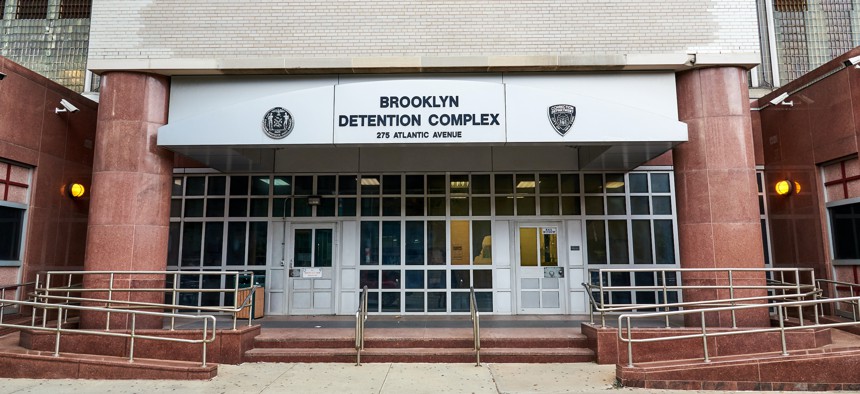In the early months of the pandemic, New York emerged as a leader in its response. It instituted an early mask mandate and rebounded from being the epicenter of the virus to the state with the lowest transmission rate and most significant health improvements..
But now, almost a year into the crisis, the state finds itself lagging significantly behind much of the rest of the nation in one key area: vaccinations, especially in the most overcrowded settings. Despite the fact that COVID cases are surging among New York’s 50,000 incarcerated people in its prisons and jails, officials have not yet announced a comprehensive plan to have them vaccinated. Even after a lawsuit was filed to spur action, the state only opened vaccinations for a mere fraction of its incarcerated, those who are 65 or older, running counter to federal guidelines to prioritize those in congregate settings.
This comes at a time when more than two dozen states across the country have made vaccinating all inmates an important component of their public health plans. Among them: New Jersey and Washington began vaccinations in prisons in December, while Connecticut, Delaware, Maryland, Massachusetts, Nebraska, New Mexico, and Pennsylvania have prison populations in line for vaccinations just after health care workers and residents and staff of nursing homes.
Who’s first in line to receive the vaccine presents both a political and ethical debate, decisions that rest largely in the hands of those who possess local control.
Here are the facts: As the Prison Policy Initiative notes in a recent report, the COVID-19 case rate is four times higher in state and federal prisons than in the general population – and twice as deadly among prisoners as it is overall. Despite the danger of close quarters and high rates of pre-existing health conditions among incarcerated people, prisons and jails have widely failed to reduce their populations enough to prevent the spread of the virus both inside correctional facilities and throughout the community.
Since March, at least 227,333 people incarcerated in state and federal prisons have tested positive for COVID-19, and at least 1,671 have died. There have also been at least 56,496 cases and 105 deaths among prison staff.
As a human rights organization dedicated to former Sen. Robert F. Kennedy’s dreams of a better, more just and peaceful world, we have spent the past year working with Colin Kaepernick’s Know Your Rights Camp, together pledging $1 million to bail people out of jail during the COVID-19 crisis.
Yet for the hundreds we’ve been able to bail out, hundreds of thousands remain behind bars, utterly defenseless against this life threatening virus.
This is not right, nor is it just. And advocates like ourselves aren’t the only ones demanding change. Groups including the American Medical Association have joined the chorus, highlighting not only the unique risks within the close confines of correctional facilities, but how such outbreaks can spread to communities beyond their walls.
New York should take a page out of Illinois’ playbook. After advocates, including our partners at the Chicago Community Bond Fund, demanded incarcerated people be prioritized in its vaccination process, Governor J.B. Pritzker quickly declared that incarcerated people would be included in the 1B phase of the state’s vaccine rollout.
President Joe Biden’s administration has pledged to prioritize vulnerable communities as it equitably and ethically oversees our nation’s vaccination plan. It’s now time for the governor and other officials to step up in New York, to demonstrate the political courage to put the state on the right side of history once again.
As New York state officials ponder a change, we ask them to reflect on the data, and on Kennedy’s words: “Every time we turn our heads the other way when we see the law flouted, when we tolerate what we know to be wrong, when we close our eyes and ears to the corrupt because we are too busy or too frightened, when we fail to speak up and speak out, we strike a blow against freedom and decency and justice.”


